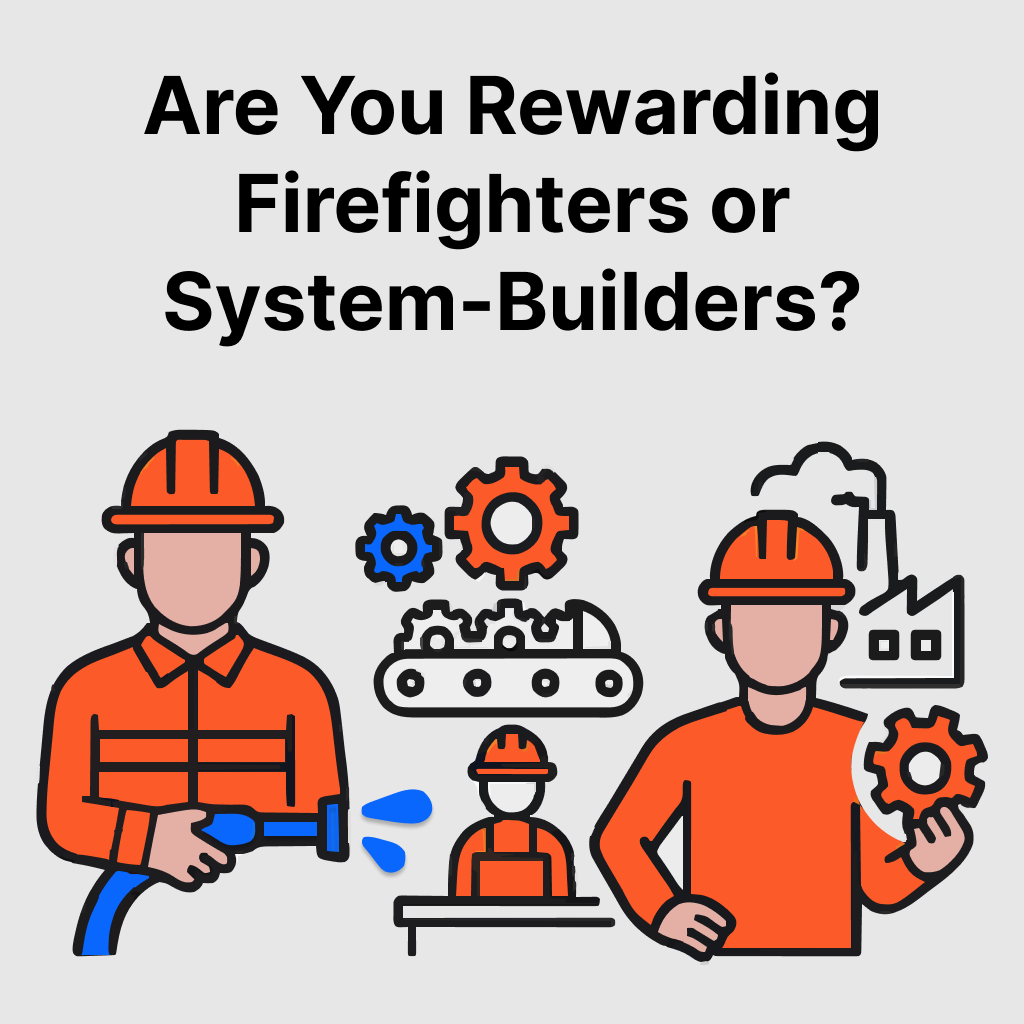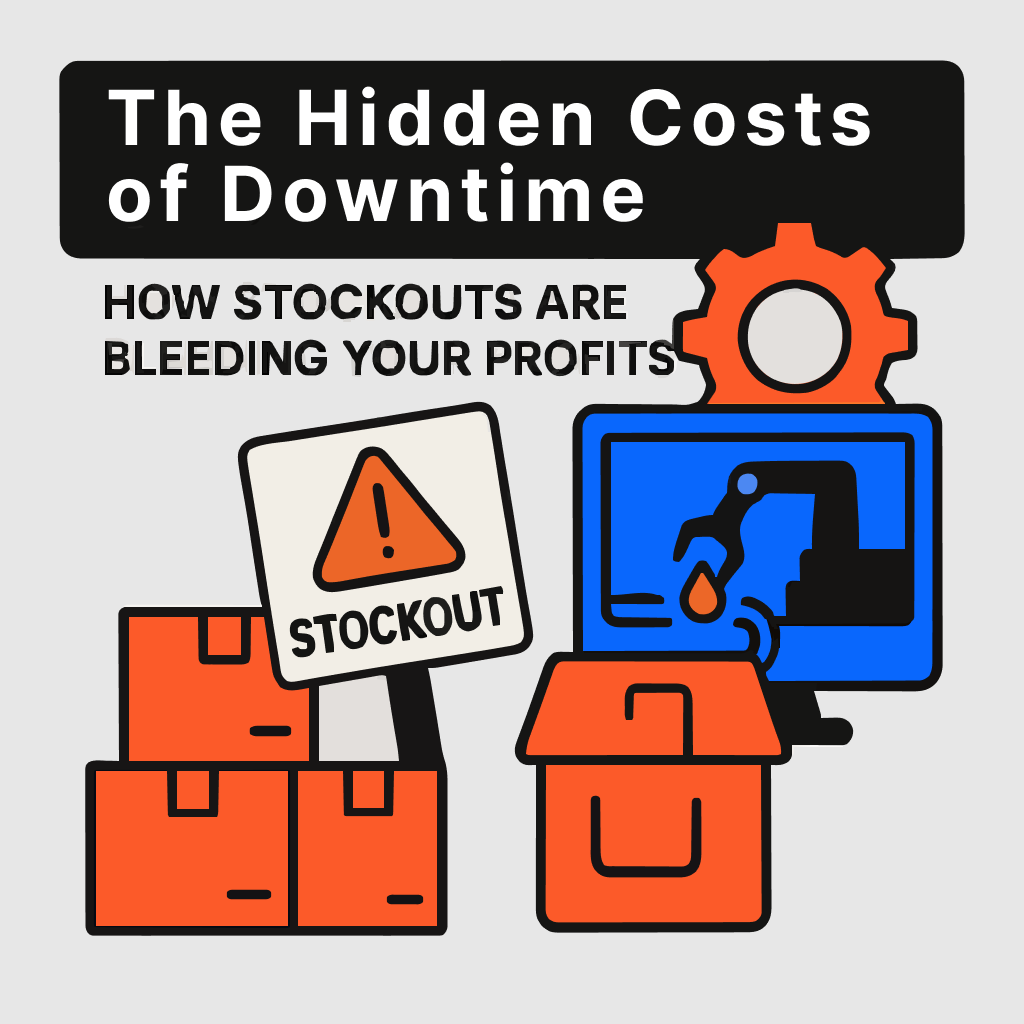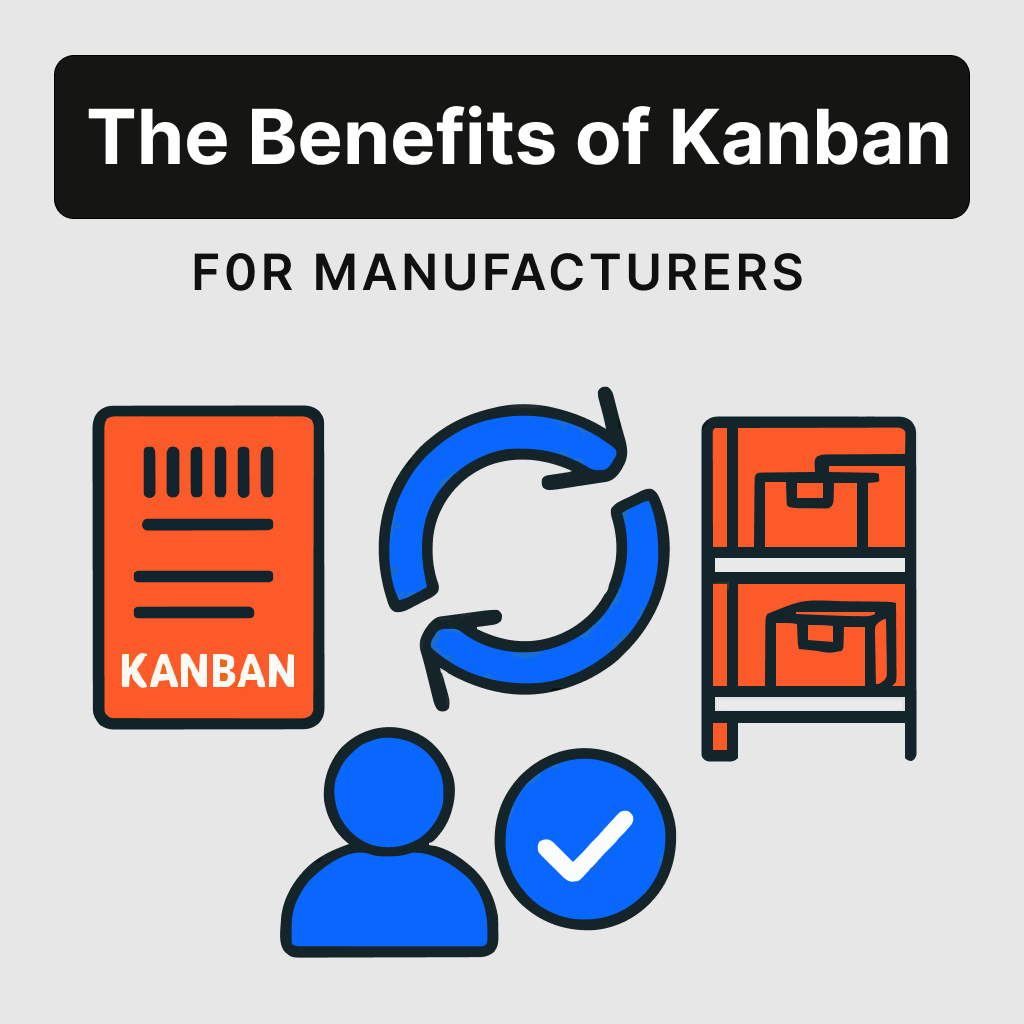It's 4:30 PM on a Friday, and one of your "star" employees just saved the day again. A critical customer order was about to ship incomplete, but Sarah swooped in, figured out which finished goods to cannibalize for parts, coordinated with three different departments, and somehow got that order out the door. Everyone's relieved. Sarah gets praised in the Monday meeting.
But here's the uncomfortable truth: you just rewarded the symptom of a broken system while ignoring the disease that's slowly killing your company's ability to scale.
Most business leaders fall into this trap without realizing it. We celebrate the heroes who thrive in chaos while overlooking the quiet system-builders who prevent fires from starting. This isn't just a management oversight, it's a strategic mistake that creates fragile, people-dependent operations that can't grow beyond their current constraints. Research shows that urgency culture subtly undermines innovation, decision quality, and sustainable growth because it keeps teams reactive rather than proactive.
The Cultural Trap: Two Types of Employees, One Critical Choice
In every growing business, you'll find two distinct types of employees. Understanding the difference between them, and which ones you're unconsciously rewarding, determines whether your company builds sustainable systems or remains trapped in perpetual crisis mode.
The Firefighter: Master of Crisis Management
Firefighters are your chaos navigators. They excel under pressure, think quickly on their feet, and somehow always manage to pull rabbits out of hats when everything's falling apart. These employees often become indispensable because they're the ones who:
- Remember where everything is when your systems fail
- Know which customers to prioritize when you can't fulfill all orders
- Can mentally juggle complex interdependencies that aren't documented anywhere
- Make split-second decisions that save immediate crises
The problem? Firefighters are optimizing for today's emergency, not tomorrow's scalability. While urgent problem-solving feels immediate and heroic, this approach promotes a culture that keeps employees in a perpetual state of reactivity, leading to disengagement, burnout, and high turnover.
The System-Builder: Architect of Sustainable Operations
System-builders take a fundamentally different approach. They're less flashy, rarely the heroes of dramatic last-minute saves, but they're quietly building the infrastructure that prevents crises from occurring. These employees focus on:
- Creating standardized processes that anyone can follow
- Building visual systems that democratize information
- Establishing reliable workflows that reduce dependencies on specific people
- Implementing preventive measures rather than reactive solutions
Here's why most businesses end up rewarding firefighters instead: the value system-builders create is invisible until it's absent.
The Hidden Dangers of a Firefighting Culture
When your company culture celebrates crisis management over systematic prevention, you're unknowingly building several dangerous dependencies into your operations. Organizations trapped in constant firefighting experience decreased efficiency, poor morale, and unsustainable growth patterns.
Bottlenecks Disguised as Expertise
Remember Sarah from our opening example? In many organizations, there's always one person who "just knows" how everything works. They become the go-to problem solver, the walking database of institutional knowledge, the human bottleneck disguised as your most valuable employee.
This creates what experts call "key person risk", a dangerous business vulnerability where losing one critical individual can significantly erode company value, even rendering it unsaleable. If that individual goes on vacation, gets sick, or leaves the company, entire processes grind to a halt. You've essentially built a single point of failure into your business model.
The death or permanent disability of a key figure demonstrably jeopardizes business continuity and success, making this dependency not just operationally risky but financially devastating.
The Escalating Crisis Cycle
Firefighting cultures create their own self-perpetuating problems. When you reward people for solving crises, you inadvertently incentivize the conditions that create more crises. Why? Because preventing problems makes firefighters less valuable, while dramatic saves make them heroes.
This leads to what manufacturing experts recognize as the "urgency addiction", where teams become so accustomed to operating in crisis mode that normal, systematic approaches feel too slow or boring. Burnout among these essential "heroes" exacerbates turnover and instability, creating an exhausting cycle of constant reactivity.
The Innovation Killer
Perhaps most damaging is how firefighting cultures stifle innovation and process improvement. When everyone's constantly putting out fires, there's never time to ask the critical question: "Why do these fires keep starting?"
Teams trapped in reactive mode spend their energy managing symptoms rather than addressing root causes. This means the same problems recur repeatedly, consuming resources that could be invested in growth and improvement.
The Strategic Shift: From Heroism to Systematization
Breaking free from firefighting culture requires a conscious leadership decision to reward different behaviors and outcomes. This isn't about eliminating capable problem-solvers, it's about redirecting that problem-solving energy toward systematic prevention rather than crisis management.
Organizations that successfully transition from firefighting to strategic planning experience increased efficiency, better morale, and sustainable growth by breaking the cycle of constant reactivity. This shift requires deliberate leadership action and adopting routines focused on proactive problem-solving.
Redefining What Gets Celebrated
The first step is changing what you publicly recognize and reward. Instead of celebrating the dramatic save, start highlighting:
- Employees who identify and fix process gaps before they cause problems
- Team members who create documentation that helps others succeed independently
- People who implement systems that reduce the need for last-minute heroics
- Workers who build reliable workflows that consistently deliver predictable results
Building Systems That Scale
Effective systematization doesn't require complex technology or expensive software. Some of the most powerful systems are elegantly simple, like visual management boards that make work status immediately obvious to everyone, or standardized processes that ensure consistent quality regardless of who's doing the work.
The key principle is creating systems that empower everyone to succeed without requiring specialized knowledge or heroic effort. When information and processes are transparent and standardized, you reduce the cognitive load on individuals while increasing the capability of the entire team.
The Compound Effect of Small Improvements
System-builders understand something that firefighters often miss: small, consistent improvements compound over time into dramatic competitive advantages. While a firefighter might save one order through heroic effort, a system-builder creates processes that reliably fulfill hundreds of orders without requiring any heroics at all.
This is why companies like Toyota, which pioneered many systematic approaches to manufacturing, consistently outperform competitors who rely more heavily on individual expertise and crisis management.
%201.svg)








.svg)














.svg)
.svg)

.svg)